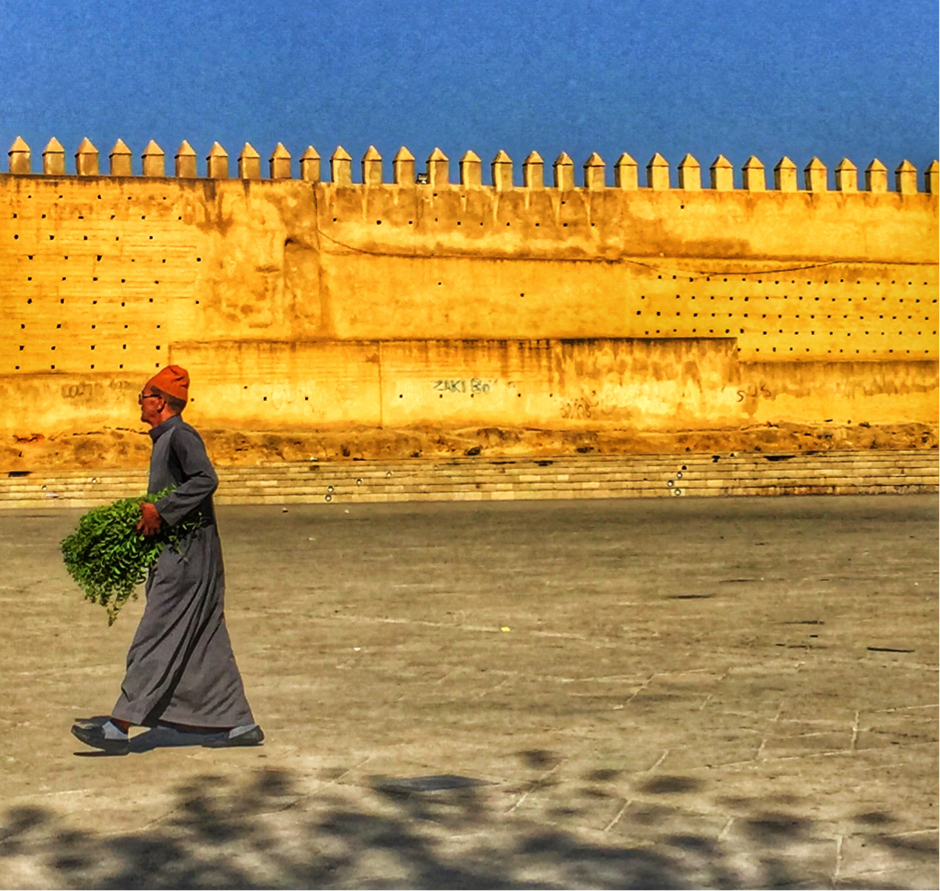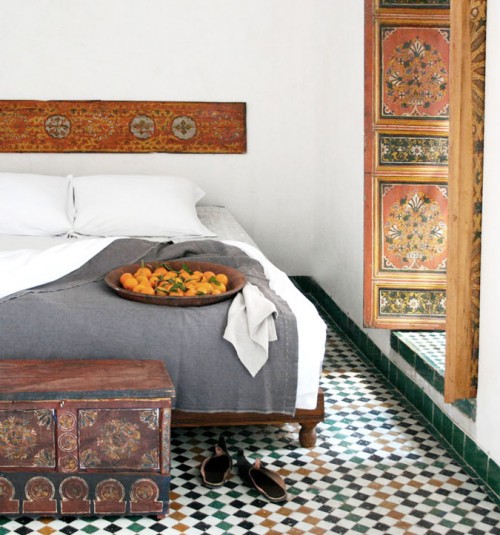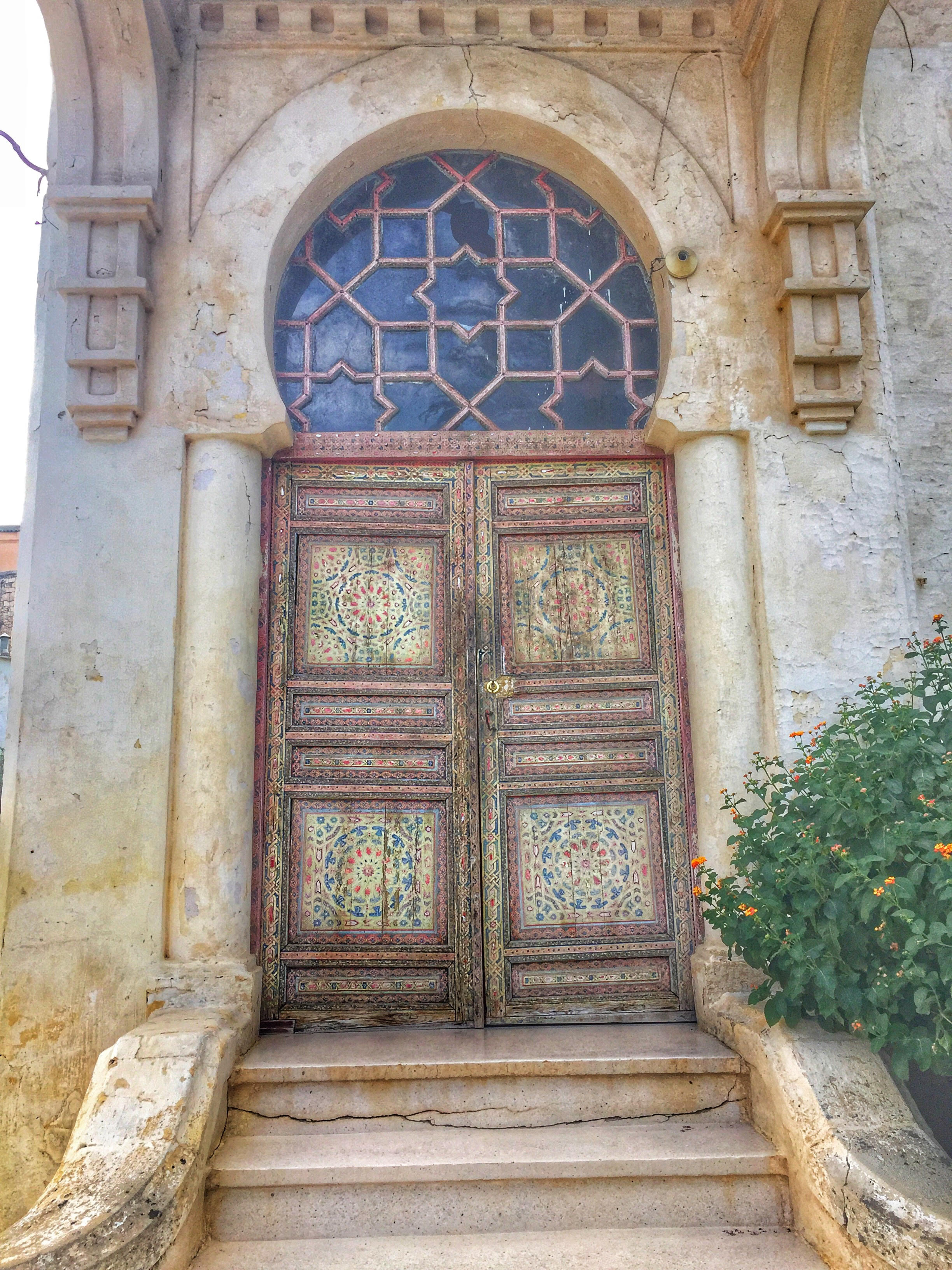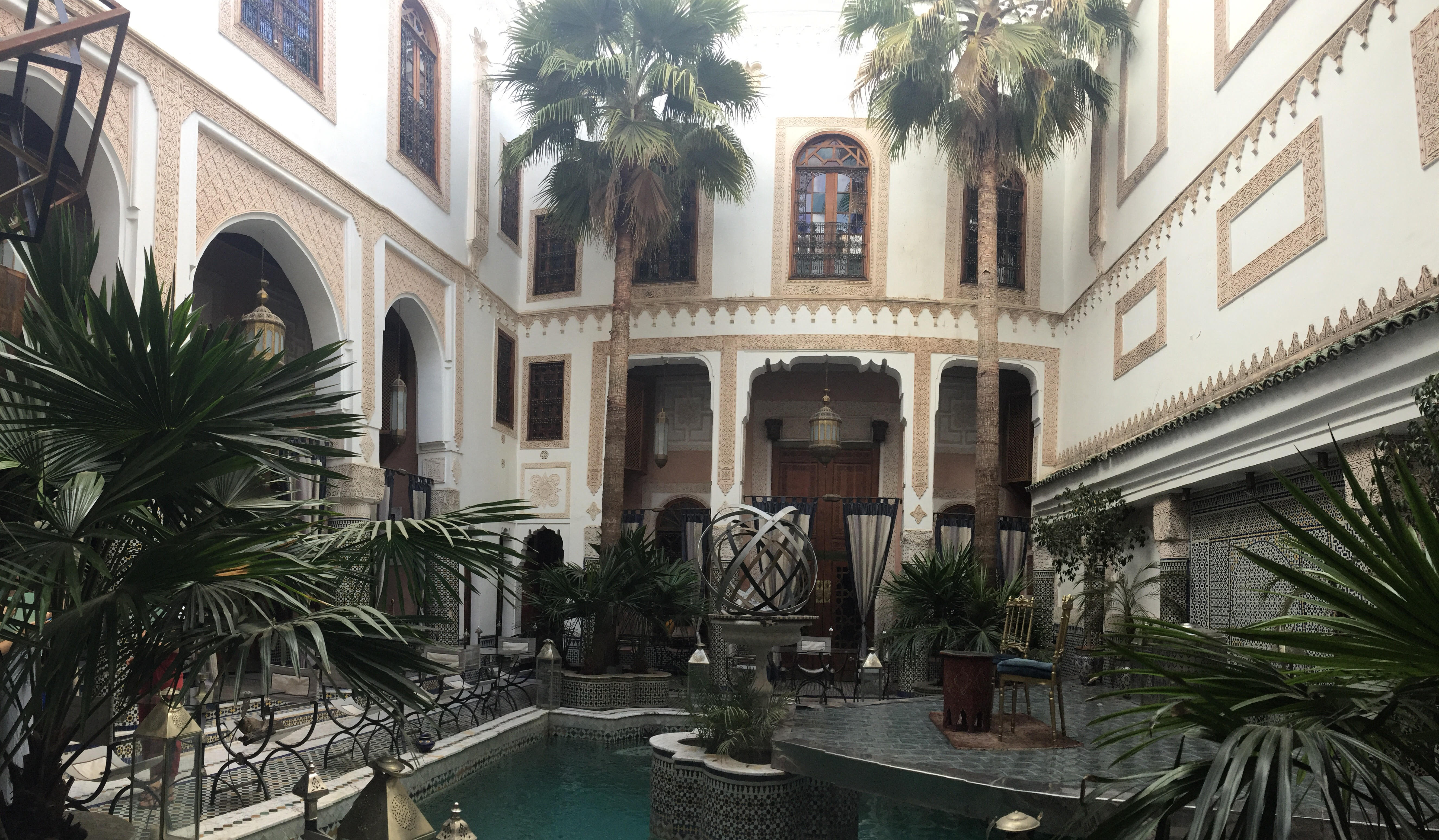The Spiritual Beauty of Arab Architecture

In mid-October, I was part of a group of AUP undergraduate and graduate who students visited Morocco's oldest city, Fez. It was my first study trip, and a completely unexpected, enchanting and unforgettable experience.
At the outset, everything was a bit overwhelming, and at the same time mesmerizing. The pleasant feeling of the warm weather with a cool breeze welcomed us as we arrived in Fez. My mood changed with the shift in climate from the chilly autumn of Paris to the 90 degree Fahrenheit heat in Fez. We headed to the ancient medina (meaning city or town in Arabic), where we stayed for the next four days.
Image Credit: Othmane Mechatte
First, we stopped at the medina entrance while our guide came to take us inside the old Arab labyrinth. The winding alleys were maze-like, and purposely built very narrowly and high to cast away the hot sunlight, and channel some of the breeze. Because of the tight streets, the medina was free from cars and other vehicles, and the only “transportation” that was available was in the form of donkeys and mules.
Fez feels like a city within a city, an open air museum. I was immediately drawn to the vibrant colors of the interlaced mosaic patterns and the smell of spices and leather was unlike any other smell I’ve ever experienced. We were submerged within three interwoven yet distinct worlds: French, Arab and African. The mix of contrasting cultures brought out the most unique forms of design and architecture. We were all excited to unlock the mysteries of the medina and discover its secrets.
The city is a rich cultural hub where you find that the new integrates with the old. It’s a UNESCO World Heritage Site that is working to maintain its ancient traditions. Fez is supported by international and local organizations to maintain its cultural heritage and strives to preserve its traditions while still envisioning the future for their community.

In order to reinvigorate the old city of Fez, people from different places were brought to the city to restore and repair old houses and historical buildings. Preserving the city’s history and architecture meant attracting more visitors from all over the world to visit Fez. Handicrafts and artisans have played, and still play an essential role in bringing life to this ancient Arab world.
In the middle of the week, we were invited to have lunch with Alaa Said, a renowned architect, at a riad, which is a traditional guesthouse that he had restored in Dar Seffarine, the heart of the medina. Said was born in Iraq and graduated from Oslo School of Architecture and Design (AHO). After ten years in Oslo working on contemporary buildings, he came to Fez to contribute to the reconstruction of traditional houses. His passion and hard work were truly inspirational.
Said came to Morocco with his Norwegian wife in 2002 as tourists and was enchanted by the art in the city that he encountered. In an interview with news channel CNN, Said shared that he didn't just want to “dust” clean the riad, he wanted to transform it into a magical place. It took Said three years to restore the building, which later became a guesthouse for travelers who visit Fez.

Image Credit: Design Sponge/Amy Azzarito
The building was in very bad condition and Said used his talent to remodel it into one of the most splendid and charming houses I’ve ever visited. Structural features and designs in Fez and other Arab architecture are powerfully influenced by the Islamic religion. Decorative patterns, columns, visible versus and the invisible arcades are different characteristics that all have religious significance.
Said explained the importance of details that are incorporated into the architecture and unraveled the structure of the house by sharing its religious and social code. Said emphasized the importance of the methods used in the architectural restoration and how it relates to Islamic and Arab culture. The process of preserving such buildings is delicate since many aspects belong to different historical periods.
As we toured through the guesthouse, Said showed us the different doors to enter the house. There were two doors at the entrance, one within another. This was to ensure the family’s privacy and security.

Image Credit: Beatriz Salgado
As we walked inside the riad, we observed the traditional Islamic courtyard on the right. Said explained that the reason for the courtyard being on right is because the right hand symbolizes “goodness.” The courtyards are never square, they are rectangular and are traditional not only in riads, but also in various other structures.
Gardens and water have played an interesting role in Islamic culture, and are usually designed to resemble or represent the Garden of Paradise from the Quran. As you stroll along the medina alleys and inside the riads, you often see beautiful fountains and gardens resembling a palace.
The private courtyard is walled off by gardens and used for a cooler space providing visibility to the surrounding room and privacy from neighbors. It’s also a protected place where the women of the house do not have to be covered in the hijab, a traditional veil required by women to be worn in public.

Image Credit: Beatriz Salgado
The courtyards are open to the sky with natural light and surrounded by either halls or rooms on all sides, making it an interesting distribution of space that allows privacy and at the same time access. It’s often enclosed by a shaded semi-open arcade or balcony designed so that the women are not seen by the guests but are able to see them.
Mathematical themes of repetition and metric patterns are a distinct characteristic of Islamic influence in Arab architecture. Islamic artisans transformed geometry into an art form because images of people weren't allowed in holy sites. Geometric figures are highly significant and are seen in intricate mosaic tile work on walls and floors in riads and mosques. It’s fascinating to see such design not only in mosaics but also in carpet design, ceramics, woodwork, leather, stones, and calligraphy.
Arab architecture encompasses an array of possibilities that are simply exquisite. The different elements that Islam brought to Arab architecture have been used as guidelines to construct and reconstruct historical buildings and used as decorative pieces. I was able to genuinely experience this remarkable city through all five senses. But I have to say, the aesthetics and visual design found everywhere truly made the trip even more special. This experience took me beyond cultural perceptions and into a world of spiritual beauty.





